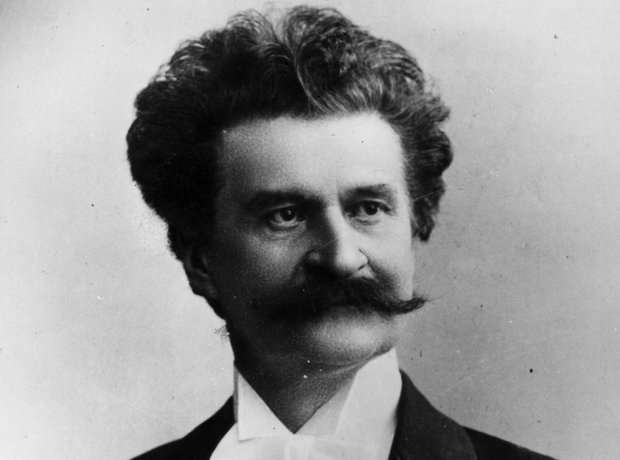Johann Strauss II, also known as Johann Strauss Jr., the Younger, or the Son, was an Austrian composer of light music, particularly dance music and operettas. Born on October 25, 1825, in Neubau, Vienna, Austria, he was destined to carry on the musical legacy of his father, Johann Strauss I, despite his father’s initial resistance. Over his career, he composed over 500 waltzes, polkas, quadrilles, and other types of dance music, as well as several operettas and a ballet. His influence on the world of music is undeniable and he is often referred to as the “Waltz King” due to his significant contributions to this genre of music.
Brief overview of Johann Strauss II: Strauss II was a prolific composer, best known for his waltzes and operettas. His music, characterized by its catchy melodies and rhythmic vitality, captured the spirit of the Viennese culture and continues to be celebrated worldwide.
Importance in the world of music: Strauss II’s contributions to the world of music extend beyond his own compositions. His innovative approach to composition and his ability to infuse traditional forms of music with new ideas and techniques had a profound impact on the evolution of dance music and operetta
Early Life and Background
Johann Strauss II was born into a musical family, with his father, Johann Strauss I, also being a well-known composer of the time. Despite his father’s initial resistance to Johann following in his musical footsteps, Johann defied his father’s wishes and went on to become one of the most famous composers of his time.
Birth and early years: Johann Strauss II was born on October 25, 1825, in Neubau, Vienna, Austria. Despite growing up in a musical family, his father wanted him to pursue a career in business. However, Strauss II, with the support of his mother, secretly pursued music studies.
Family background, including mention of Johann Strauss I: Strauss II’s father, Johann Strauss I, was a famous composer known for his waltzes. Despite his initial opposition, Strauss I’s musical legacy played a significant role in shaping Strauss II’s musical career.
Musical Career
Johann Strauss II’s musical career was a testament to his passion, talent, and resilience. Despite his father’s initial opposition, Strauss Jr. was determined to pursue his love for music. He began his career by forming his own orchestra and started composing his own music. His orchestra quickly gained popularity, and Strauss Jr. became a well-known figure in the Viennese music scene.
Start of his musical career: Strauss Jr. started his musical career at a young age, forming his own orchestra to perform in various venues in Vienna. Despite the competition from his father’s orchestra, Strauss Jr.’s orchestra quickly gained popularity due to their innovative performances and Strauss Jr.’s charismatic leadership.
His rise to fame as a composer: Strauss Jr.’s talent as a composer became evident with the success of his early waltzes and polkas. His compositions were well-received by the public, and he quickly rose to fame as a leading composer of dance music.
Notable compositions: Strauss Jr. composed over 500 waltzes, polkas, quadrilles, and other types of dance music. Some of his most notable compositions include “The Blue Danube,” “Die Fledermaus,” “Voices of Spring,” “Kaiser-Walzer,” “Tales from the Vienna Woods,” “The Gypsy Baron,” “Tritsch-Tratsch-Polka,” and “Wiener Blut”. Each of these compositions showcases Strauss Jr.’s unique style and his ability to create music that resonates with the audience.
Influence and Legacy
Johann Strauss II left an indelible mark on the world of music. His compositions, particularly his waltzes and operettas, played a significant role in shaping the Viennese waltz and operetta. His music continues to be celebrated and enjoyed by audiences worldwide, and his influence can be seen in the works of many composers and musicians who followed him.
- Impact on Viennese waltz and operetta: Strauss Jr. is often credited with elevating the status of the waltz and making it a respected form of music. His operettas, with their catchy tunes and humorous plots, also contributed to the popularity of this genre.
- Influence on other composers and musicians: Strauss Jr.’s music had a significant influence on other composers and musicians. His innovative approach to composition and his ability to create engaging and memorable melodies have been an inspiration for many musicians who followed in his footsteps.
Personal Life
Johann Strauss II’s personal life was as eventful as his musical career. He was married three times, and each of his marriages had a significant impact on his life and music.Information about his marriages and personal relationships: Strauss II’s first marriage was to Henrietta Treffz in 1862. Treffz, a successful singer, was a significant support in his life and career, providing both emotional and financial stability. Her belief in his talent and her encouragement played a crucial role in his success. Their marriage was a happy one, and her sudden death in 1878 left Strauss II devastated.
Not long after Treffz’s death, Strauss II entered into his second marriage with Angelika Dittrich. Dittrich, an actress, was known for her beauty and charm. However, this marriage was short-lived and ended in divorce in 1882 due to incompatibility. The divorce was a scandal in Vienna’s social circles, further adding to the challenges Strauss II faced during this period.
His third and final marriage was to Adele Deutsch in 1887. Adele, a significantly younger woman, brought a renewed sense of youth and vitality into Strauss II’s life. Despite the age difference, their marriage was a happy one, and Adele provided the emotional support that Strauss II needed in his later years. She survived him and lived well into the 20th century, preserving his legacy and promoting his music.
Death and Posthumous Recognition
Johann Strauss II passed away on June 3, 1899, in Vienna, Austria. His death marked the end of an era, but his music continues to live on.
- Details of his death: Strauss II died from pneumonia at the age of 73. His health had been declining for several years, and his death, while not unexpected, was a significant loss to the world of music. His death was mourned by music lovers worldwide, and he was laid to rest in the Vienna Central Cemetery, one of the most famous cemeteries in Vienna. His grave, located near those of other famous composers like Beethoven and Schubert, is a site of pilgrimage for many music lovers who come to pay their respects to the “Waltz King”.
- Posthumous recognition and honors: Even after his death, Strauss II’s music continues to be celebrated worldwide. His compositions are regularly performed in concerts and his contribution to music has been recognized with various honors and memorials. In Vienna, his home city, there are several statues and commemorative plaques in his honor, including a golden statue in Stadtpark. This statue, unveiled in 1921, depicts Strauss in a characteristic pose, holding a violin, and is one of the most photographed monuments in Vienna.
His music has also been featured in numerous films and television shows, further cementing his legacy in the world of music. From classic films like “2001: A Space Odyssey” to modern TV shows, his music continues to captivate audiences with its timeless charm.
In 2001, the International Astronomical Union named a crater on the planet Venus after Strauss II, a testament to his universal appeal. This honor reflects the enduring impact of his music, not just on Earth, but across the universe.
For more on his life and works, visit his Wikipedia page.
FAQs
- What is Strauss most famous for?
- Johann Strauss II is most famous for his waltzes, which earned him the title “The Waltz King”. His compositions played a significant role in popularizing the waltz in Vienna during the 19th century.
- What is Johann Strauss’s most famous waltz?
- Strauss’s most famous waltz is arguably “The Blue Danube”. This piece is considered one of the greatest pieces of dance music ever composed and is often associated with Vienna and Austrian culture.
- How old was Johann Strauss when he died?
- Johann Strauss II died at the age of 73 on June 3, 1899.
- How are Richard Strauss and Johann Strauss related?
- Despite sharing the same surname, Richard Strauss and Johann Strauss II are not directly related. Richard Strauss was a prominent German composer who came from a different family.
- In conclusion, Johann Strauss II’s life and career were marked by his extraordinary talent and his enduring contributions to the world of music. From his early years in Vienna to his rise as the “Waltz King”, Strauss’s journey was a testament to his passion for music and his dedication to his craft.
- His compositions, particularly his waltzes and operettas, have left an indelible mark on the world of music. His music, characterized by its catchy melodies and rhythmic vitality, continues to captivate audiences worldwide. His influence can be seen in the works of many composers and musicians who followed him.
- Even after his death, Strauss’s legacy continues to live on. His music is regularly performed in concerts, featured in films and television shows, and celebrated in various memorials and honors. His life and works serve as a reminder of the power of music to transcend boundaries and touch the hearts of people around the world.



